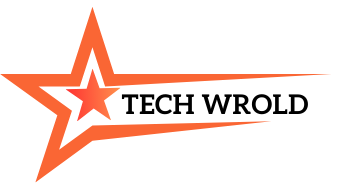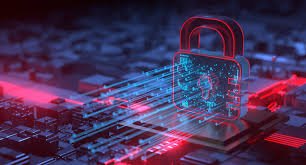Evolution and Impact of Cybersecurity Technologies
Cybersecurity started its development as far back as the beginning of using computers. In the beginning, security was deemed to be less serious and usually involved more strictly maintaining entity accessibility and the rudimentary password protection. The idea of cybersecurity came into the surface when networks started forming in the 1970s. Some of these developments include early formations of encryption algorithms and fundamental formation of the network security protocols.
Evolution of Cybersecurity Technologies:
980s and 1990s:
During the 1980s , The existence of antivirus became an important need, and necessary measure against a constantly rising threat of malware. Of the many advancements of network

security that happened in the 90s notable events include the introduction of firewalls and IDS. The emergence of the internet necessitated development of increased security measures giving rise to such inventions as VPN and SSL encryption
2000s:
Threats that are more sophisticated than conventional malware or viruses are also referred to as Advanced Threats.
The onset of the twenty-first century saw the increase in highly developed malicious programs, the appearance of a practice calling itself phishing, as well as recently emerging distributed denial of service (DDoS) attacks. This period marked the emergence of the subsequent generation security products including the next-generation firewalls (NGFWs), intrusion prevention services (IPS), and an all-inclusive SIEM. This was due to the higher levels of enhancements and the amount of threats that faced organizations becoming more and more complex.
The 2010s to Present:
This paper specifically emphasizes on Integration and Intelligence.
In the last decade, cybersecurity moved to the integrated and intelligence level of protection. Cloud computing, IoT, and mobility are providing us with emerging threats. Threat identification and management is based on the use of automation, machine learning and artificial intelligence (AI), in contemporary security technologies. Interestingly, the use of zero trust architecture, security automation and advanced analytics, signals a paradigm shift towards an integrated and more reflexive approach to security.

Core Of Cybersecurity Technologies:
(IDS) &(IPS)
Intrusion Detection Systems (IDS): IDS solutions control various activities in the network and systems to identify the sign of malicious activities and known attacks. It produces alarms when it identifies possible intrusions so the security personnel can look into it.
Intrusion Prevention Systems (IPS): It is important to noted that IPS technologies not only identifying threats but also implement automatic response process towards threats. These security mechanisms are able to filter out unwanted traffic, disconnect connections and apply security measures in real time.
Endpoint Protection
Endpoint protection solutions provide protection to endpoint devices like computers, smart phones and tablets etc.
Antivirus Software: Traditional antivirus software Maiden find and eradicate existing icon worms. Today’s antivirus software also has features such as, real-time protection, behavior-based detection, and intelligence reports.
Endpoint Detection and Response (EDR): EDR solutions means enhanced monitoring and identification ofEndpoints along with enhanced response capabilities. They employ behavior patterns and artificial intelligence to address different threats that coul പ might not be detected by traditional antivirus scans.
Encryption
Security is one of the most significant technology pillars: it pertains to the encryption of data in particular cognitive utility.
Data Encryption: The way to encode data so that otherwise unauthorized people can’t understand authorized people only understand and those people understand those know about data encryption.Methods of encryption include the well known: symmetric encryption such as Advanced Encryption Standard (AES) and asymmetric encryption such as Rivest–Shamir–Adleman (RSA).
Transport Layer Security (TLS): TheTLSis an encryption scheme that guarantees the security ofmitted communication through a network. One example of where it’s used is to encrypt the information that’s moved across the Internet when creating secure connections, or HTTPS.
Identity and Access management is also abbreviated as IAM.
IAM technologies are responsible for handling of user identities as well as control of access to resources in accordance with the polices on authentication and authorization.
Authentication: Another measure that contributes to the protection of an organization’s resources is the verification process; the users are confirmed to be the real owners of accounts, passwords, etc through the use of MFA. MFA integrates a number of measures such as passwords and biometric information to improve on security.
Authorization: Authorization technologies designate as to what should be attained and what interactions should be enabled for the users. RBAC and ABAC are the two prominent models of the authorization mechanism.
Security Information and Event Management:
refers to the process of using software tools characterized by SIM technology.
SIEM solutions also define, consolidate, integrate and manage security logs, events, incidents or alarms.
Log Management: SIEM platforms gather and consolidate log information coming from different areas of the network such as devices, servers and applications. This central logging helps in identifying suspicious events and analyzing the events or situations that may lead to a security breach.
Event Correlation and Analysis: SIEM systems apply correlation rules and analyses that help recognize characteristics, which point to security threats. They trigger alarms and offer information towards handling of incidents and threats.
Threat Intelligence
Threat intelligence is the gathering, processing and dissemination of information about threats and they instances. Threat Intelligence Feeds: A threat intelligence feed is a feed content real time information on that is a threat aka malware, attack IP address and vulnerabilities. These feeds allow organization to know the threats born and respond to them immediately.
Threat Hunting: Threat hunting is defined as seeking of potential threats, indicators of compromise or other signs of malicious activity in the network. The threat hunters apply threat-intelligence, data analysis, and effective tools in an attempt to initiate threats before they produce much havoc.
Trends in Cybersecurity Technologies
1. Artificial intelligence and Machine intelligence
Both AI and machine learning have been used as some of the modern approaches to cybersecurity which aims at improving not only threat detection but also response.
Behavioral Analysis: A feature in AI is the ability to analyze the behavior

of users or networks and distinguished patterns that are violating the normality and may in fact point out to a possible security threat.
Automated Response: Incident response actions like isolating the affected system or banning the entry of the suspicious traffic can be pre-configured through machine learning algorithms which will act fast in order to respond to threats.
2. Zero Trust Architecture
Zero trust is a recent development, designed as an architectural approach that does not inherently trust anything and needs authorization for everything.
Micro-Segmentation: Zero trust architecture means that networks should be divided into separate compartments in order to hinder the adversary’s movement within the network and mitigate the effects of a breach, if it occurs.
Continuous Verification: In zero trust, trust is not given to any user, device, or application; it has to be earned continually with the user, device, or application identity being checked regardless of where it is located in the network or segment.
3. Cloud Security
Cloud security technologies become more important as cloud adoption increases, as data and applications reside in cloud space.
Cloud Access Security Brokers (CASBs): CASBs can give the user an oversight by protecting, accessing and the threat identification of cloud services.
4. Privacy-Enhancing Technologies
Privacy enhancing technologies (PETs) lie within the realms :
Data Masking: There are several level of data masking, which conceals allowable data, reducing its accessibility to those users who do not have permission to access such information but at the same time maintaining the possibility for the permitted users to use this information in a proper way. Differential Privacy: Differential privacy is an algorithm that puts noise into the data so that individual-level analysis is impossible yet the results are otherwise valuable.
Differential Privacy: Differential privacy is an algorithm that puts noise into the data so that individual-level analysis is impossible yet the results are otherwise valuable.
5. Cybersecurity Automation
Automation is seen as in formative in the daily handling of sophisticated security environment with responding to threat incidents.
Security Orchestration, Automation, & Response (SOAR): It is techno security orchestration, automation, resilience and comprehensive operational response system (SOAR). It enables sec teams to run their operational workflows and decrease time lag.
Automated Threat Detection: There are preset rules and machine algorithms that are incorporated in automation tools to identify threats and take appropriate actions at real-time and not relying on human input.
Future Of Cybersecurity Technologies
1. Quantum Computing
There is a lot that can be done in the cybersecurity sector concerning quantum computing due to the amount of computation that it provides.
Impact on Cryptography: As commercial quantum computers pose a threat to traditional cryptographic algorithms, hence users have to look for quantum-safe cryptography.
Quantum Key Distribution: Quantum key distribution (QKD) is set to be among the technologies that aim at improving key exchange security to counter the effects of quantum computing.
2. 5G Security
There is an evolution, where the networks that are now being employed in the provision of telecommunication services pose new security risks as well as concerns in as much as the implementation of 5G networks are concerned.
Enhanced Threat Surface: 5G networks possess higher connectivity and bandwidth than the previous networks amplifying the security risk or threats and therefore needs enhanced security measures.
Network Slicing Security: From the following general concept of network slicing, it is evident that network slicing enables the establishment of multiple virtual networks on a single, physical 5G network. The security of each of these slices is very significant in the security of the whole network.

3. Increased Identification and Mitigation of Threats
The future development of threat detection and response technologies will be aimed at dealing with ever more complex threats.
Behavioral Analytics: There will be further enhancements to behavioral analysis to detect any weaknesses and threats that may be exhibited through analysis of patterns and irregularity of a user or network’s activities.
Threat Intelligence Integration: It will improve the detection process and provide context to the alerts making it easier for security technologies to respond to threats.
4. Enhanced Privacy Controls
Privacy issues will be the main factors sparking innovation and adoptions of new technologies and practices for the protection of personal data and to meet regulatory requirements.
Privacy by Design: Privacy by design principles will be included into the processes supporting technologies and systems and therefore privacy will be considered and built in all stages of products and services’ life cycle.
Data Sovereignty: Legal concerns over data sovereignty will drive the architectures of cybersecurity products and solutions with focus on national data protection laws and policies.
Conclusion
This paper notes that the technologies available for cybersecurity are dynamic all the time due to emerging complexities in cyber threats. The basics include firewalls and encryption while modern cybersecurity measures include AI threat detection, and zero-trust models amongst others.
Finally, considering the future of cybersecurity one should highlight important technologies like quantum computing, 5G, PETs, that will form the basis for future cybersecurity technologies. The organizations have to be more careful, and innovative to ensure that their online values are safe and they can withstand newer attacks in future. Cybersecurity also cannot be a one off activity but it is a process that will need constant reviewed, funded and cooperation to ensure the safety of the cyber environment.








3 thoughts on “Evolution and Impact of Cybersecurity Technologies”